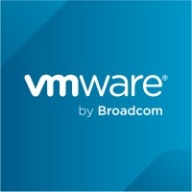

VMware Aria Automation and Cisco UCS Director compete in the automation and orchestration software category. VMware Aria Automation appears to have the upper hand due to its comprehensive features and flexibility in diverse environments.
Features: VMware Aria Automation offers multi-machine blueprints, automated VM lifecycles, and integration with third-party systems, making it ideal for virtual infrastructures. Cisco UCS Director excels in Cisco hardware management, offering excellent orchestration for Cisco-centric systems.
Room for Improvement: VMware Aria Automation users suggest improvements in documentation, ease of use, and cloud provider integration. Cisco UCS Director could enhance its user interface and integration with non-Cisco products, while broadening its feature set for diverse environments.
Ease of Deployment and Customer Service: VMware Aria Automation supports on-premises and hybrid deployments with generally favorable tech support, though response times can vary. Cisco UCS Director focuses on on-premises deployment, with good tech support, but customization challenges indicate a need for simplified support processes.
Pricing and ROI: VMware Aria Automation is perceived as expensive but offers significant ROI with enhanced infrastructure agility. Cisco UCS Director's high cost and pricing concerns may limit ROI, especially with significant customization required for non-Cisco systems.
| Product | Market Share (%) |
|---|---|
| VMware Aria Automation | 9.4% |
| Cisco UCS Director | 1.4% |
| Other | 89.2% |


| Company Size | Count |
|---|---|
| Small Business | 4 |
| Midsize Enterprise | 1 |
| Large Enterprise | 11 |
| Company Size | Count |
|---|---|
| Small Business | 32 |
| Midsize Enterprise | 24 |
| Large Enterprise | 130 |
Cisco UCS Director enables automated delivery of physical and virtual data center resources, empowering data centers to move at the speed of business.
VMware Aria Automation is a cloud management tool that allows companies to simplify their cloud experience through a modern automation platform. The solution is designed to deliver self-service clouds, multi-cloud automation with governance, and DevOps-based security and infrastructure management. It helps organizations improve IT agility, efficiency, and productivity through its various features.
VMware Aria Automation has multiple use cases that include the following:
VMware Aria Automation Features
VMware Aria Automation has various features that allow users to easily perform operations. Some of the solution's capacities include:
VMware Aria Automation Benefits
VMware Aria Automation offers its users various benefits. Some of the biggest advantages that the solution brings to companies that utilize it include:
Reviews from Real Users
Awais J., CTO/CEO at a tech services company, likes VMware Aria Automation because it saves a lot of time, provides more visibility, and has extensive automation capabilities.
An IT consultant at a government rates VMware Aria Automation highly because the product gives you flexibility to analyze and consume resources.
We monitor all Cloud Management reviews to prevent fraudulent reviews and keep review quality high. We do not post reviews by company employees or direct competitors. We validate each review for authenticity via cross-reference with LinkedIn, and personal follow-up with the reviewer when necessary.